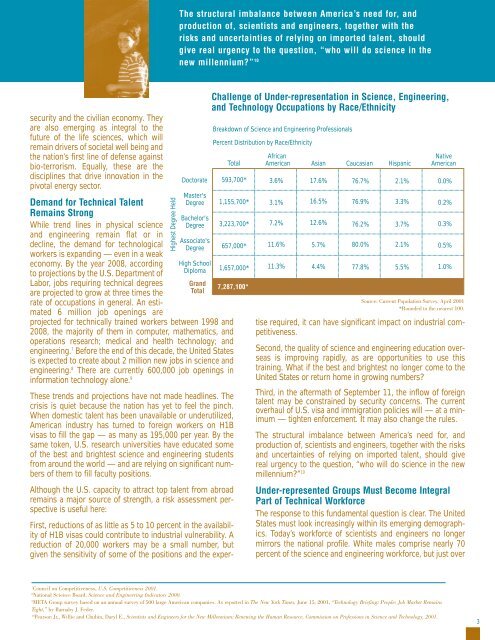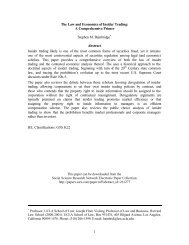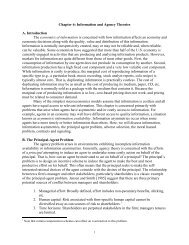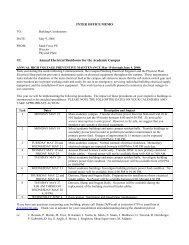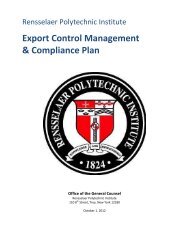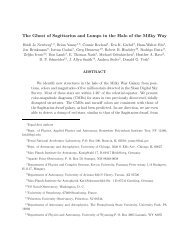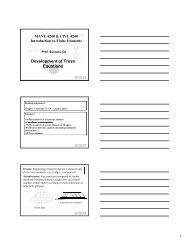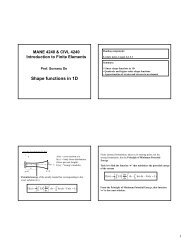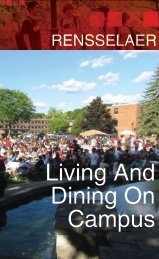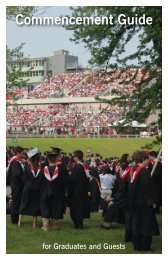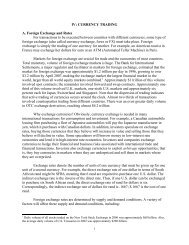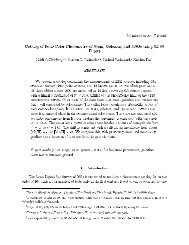Quiet Crisis - Building Engineering and Science Talent
Quiet Crisis - Building Engineering and Science Talent
Quiet Crisis - Building Engineering and Science Talent
You also want an ePaper? Increase the reach of your titles
YUMPU automatically turns print PDFs into web optimized ePapers that Google loves.
The structural imbalance between America’s need for, <strong>and</strong><br />
production of, scientists <strong>and</strong> engineers, together with the<br />
risks <strong>and</strong> uncertainties of relying on imported talent, should<br />
give real urgency to the question, “who will do science in the<br />
new millennium?” 10<br />
security <strong>and</strong> the civilian economy. They<br />
are also emerging as integral to the<br />
future of the life sciences, which will<br />
remain drivers of societal well being <strong>and</strong><br />
the nation’s first line of defense against<br />
bio-terrorism. Equally, these are the<br />
disciplines that drive innovation in the<br />
pivotal energy sector.<br />
Dem<strong>and</strong> for Technical <strong>Talent</strong><br />
Remains Strong<br />
While trend lines in physical science<br />
<strong>and</strong> engineering remain flat or in<br />
decline, the dem<strong>and</strong> for technological<br />
workers is exp<strong>and</strong>ing — even in a weak<br />
economy. By the year 2008, according<br />
to projections by the U.S. Department of<br />
Labor, jobs requiring technical degrees<br />
are projected to grow at three times the<br />
rate of occupations in general. An estimated<br />
6 million job openings are<br />
projected for technically trained workers between 1998 <strong>and</strong><br />
2008, the majority of them in computer, mathematics, <strong>and</strong><br />
operations research; medical <strong>and</strong> health technology; <strong>and</strong><br />
engineering. 7 Before the end of this decade, the United States<br />
is expected to create about 2 million new jobs in science <strong>and</strong><br />
engineering. 8 There are currently 600,000 job openings in<br />
information technology alone. 9<br />
These trends <strong>and</strong> projections have not made headlines. The<br />
crisis is quiet because the nation has yet to feel the pinch.<br />
When domestic talent has been unavailable or underutilized,<br />
American industry has turned to foreign workers on H1B<br />
visas to fill the gap — as many as 195,000 per year. By the<br />
same token, U.S. research universities have educated some<br />
of the best <strong>and</strong> brightest science <strong>and</strong> engineering students<br />
from around the world — <strong>and</strong> are relying on significant numbers<br />
of them to fill faculty positions.<br />
Although the U.S. capacity to attract top talent from abroad<br />
remains a major source of strength, a risk assessment perspective<br />
is useful here:<br />
Highest Degree Held<br />
Doctorate<br />
Master's<br />
Degree<br />
Bachelor's<br />
Degree<br />
Associate's<br />
Degree<br />
High School<br />
Diploma<br />
Gr<strong>and</strong><br />
Total<br />
Challenge of Under-representation in <strong>Science</strong>, <strong>Engineering</strong>,<br />
<strong>and</strong> Technology Occupations by Race/Ethnicity<br />
Breakdown of <strong>Science</strong> <strong>and</strong> <strong>Engineering</strong> Professionals<br />
Percent Distribution by Race/Ethnicity<br />
Total<br />
593,700*<br />
1,155,700*<br />
3,223,700*<br />
657,000*<br />
1,657,000*<br />
7,287,100*<br />
African<br />
American Asian Caucasian Hispanic<br />
3.6%<br />
3.1%<br />
7.2%<br />
11.6%<br />
11.3%<br />
17.6%<br />
16.5%<br />
12.6%<br />
5.7%<br />
4.4%<br />
76.7%<br />
76.9%<br />
76.2%<br />
80.0%<br />
77.8%<br />
2.1%<br />
3.3%<br />
3.7%<br />
2.1%<br />
5.5%<br />
Native<br />
American<br />
0.0%<br />
0.2%<br />
0.3%<br />
0.5%<br />
1.0%<br />
Source: Current Population Survey, April 2001<br />
*Rounded to the nearest 100.<br />
First, reductions of as little as 5 to 10 percent in the availability<br />
of H1B visas could contribute to industrial vulnerability. A<br />
reduction of 20,000 workers may be a small number, but<br />
given the sensitivity of some of the positions <strong>and</strong> the expertise<br />
required, it can have significant impact on industrial competitiveness.<br />
Second, the quality of science <strong>and</strong> engineering education overseas<br />
is improving rapidly, as are opportunities to use this<br />
training. What if the best <strong>and</strong> brightest no longer come to the<br />
United States or return home in growing numbers?<br />
Third, in the aftermath of September 11, the inflow of foreign<br />
talent may be constrained by security concerns. The current<br />
overhaul of U.S. visa <strong>and</strong> immigration policies will — at a minimum<br />
— tighten enforcement. It may also change the rules.<br />
The structural imbalance between America’s need for, <strong>and</strong><br />
production of, scientists <strong>and</strong> engineers, together with the risks<br />
<strong>and</strong> uncertainties of relying on imported talent, should give<br />
real urgency to the question, “who will do science in the new<br />
millennium?” 10<br />
Under-represented Groups Must Become Integral<br />
Part of Technical Workforce<br />
The response to this fundamental question is clear. The United<br />
States must look increasingly within its emerging demographics.<br />
Today’s workforce of scientists <strong>and</strong> engineers no longer<br />
mirrors the national profile. White males comprise nearly 70<br />
percent of the science <strong>and</strong> engineering workforce, but just over<br />
7<br />
Council on Competitiveness, U.S. Competitiveness 2001.<br />
7<br />
Council on Competitiveness, U.S. Competitiveness 2001.<br />
8<br />
National <strong>Science</strong> Board. <strong>Science</strong> <strong>and</strong> <strong>Engineering</strong> Indicators 2000.<br />
9<br />
META Group survey based on an annual survey of 500 large American companies. As reported in The New York Times, June 15, 2001, “Technology Briefing: People: Job Market Remains<br />
Tight,” by Barnaby J. Feder.<br />
10<br />
Pearson Jr., Willie <strong>and</strong> Chubin, Daryl E., Scientists <strong>and</strong> Engineers for the New Millennium: Renewing the Human Resource, Commission on Professions in <strong>Science</strong> <strong>and</strong> Technology, 2001.<br />
3


